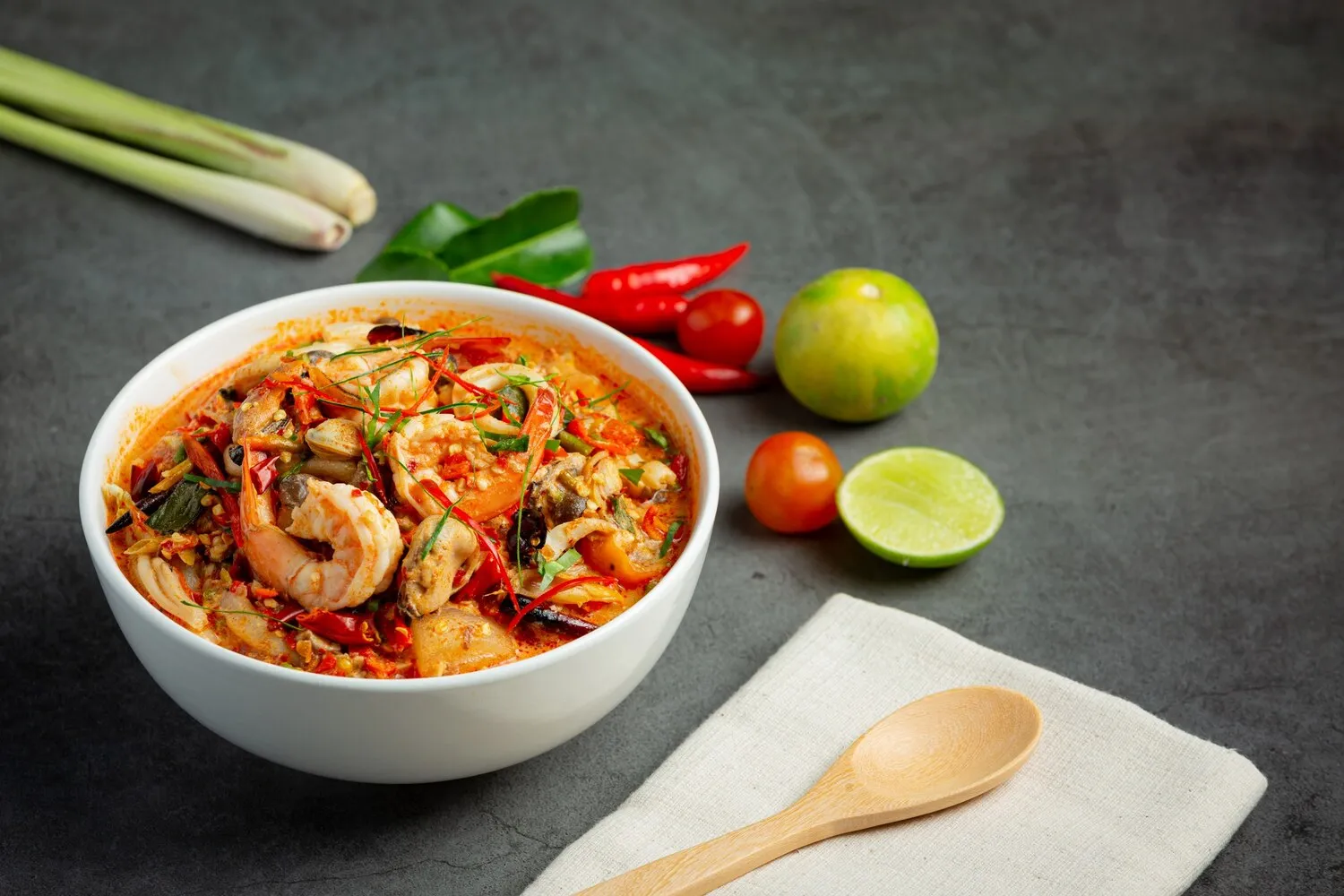
Coconut Noodle Soup (Ohn No Khao Swè)
Noodle soup in a fragrant coconut milk broth.
Nutrition Facts
* The % Daily Value (DV) tells you how much a nutrient in a serving of food contributes to a daily diet. 2,000 calories a day is used for general nutrition advice.
Ohn No Khao Swè reflects Myanmar's diverse culinary influences, blending indigenous ingredients with flavors from neighboring countries like India, China, and Thailand. The use of coconut milk suggests Southeast Asian influences, while the wheat noodles may point to Chinese influences. The precise origins are unclear, but it's a well-established dish within Burmese cuisine.
Ohn No Khao Swè is a popular and widely consumed dish in Myanmar, enjoyed by people of all ages and backgrounds. It's often served as a comforting and satisfying meal, particularly during cooler months or as a celebratory dish.
Everyday Meal and Special Occasions
While readily available as street food and in restaurants, Ohn No Khao Swè is also commonly prepared at home for family meals. It can also be featured at gatherings and celebrations due to its comforting and flavorful nature.
Regional Variations
Different regions of Myanmar may have their own unique variations of Ohn No Khao Swè, with slight modifications to the broth, noodles, and toppings. For example, Shan State may have a version with a more tangy or spicy flavor profile.
The defining flavor profile of Ohn No Khao Swè is a rich, creamy, and savory combination. It features the sweetness of coconut milk balanced by the savory depth of chicken or meat broth, complemented by aromatic spices and garnishes.
The broth is typically made from coconut milk, chicken or occasionally mutton, ginger, garlic, onions, and fish sauce (or soy sauce for vegetarian versions). Turmeric is often added for color and subtle flavor. The noodles are typically wheat noodles, similar to egg noodles or spaghetti. Common toppings include crispy fried onions, hard-boiled eggs (often quartered), cilantro, chili oil or dried chili flakes, and a squeeze of lime. Some variations may include fritters (akyaw), and roasted chickpea flour to thicken the sauce.
Coconut Milk Quality
Use good quality, full-fat coconut milk for the richest and most flavorful broth. Freshly squeezed coconut milk is ideal, but canned coconut milk is a suitable substitute.
Noodle Preparation
Cook the noodles al dente to prevent them from becoming mushy in the broth. Rinse the noodles after cooking to remove excess starch.
Balancing the Flavors
Adjust the seasoning to your preference. Add more fish sauce (or soy sauce) for saltiness, chili for spiciness, and lime juice for acidity to balance the richness of the coconut milk.
Freshness is Key
Use fresh herbs and garnishes to brighten the flavor of the dish and add visual appeal. Fresh cilantro and lime are essential.
Explore additional Soup dishes and restaurants
Explore SoupDiscover top dining spots and culinary experiences in Aurora.
Explore AuroraLearn more about the food culture, restaurant scene, and culinary heritage of United States.
Explore United States